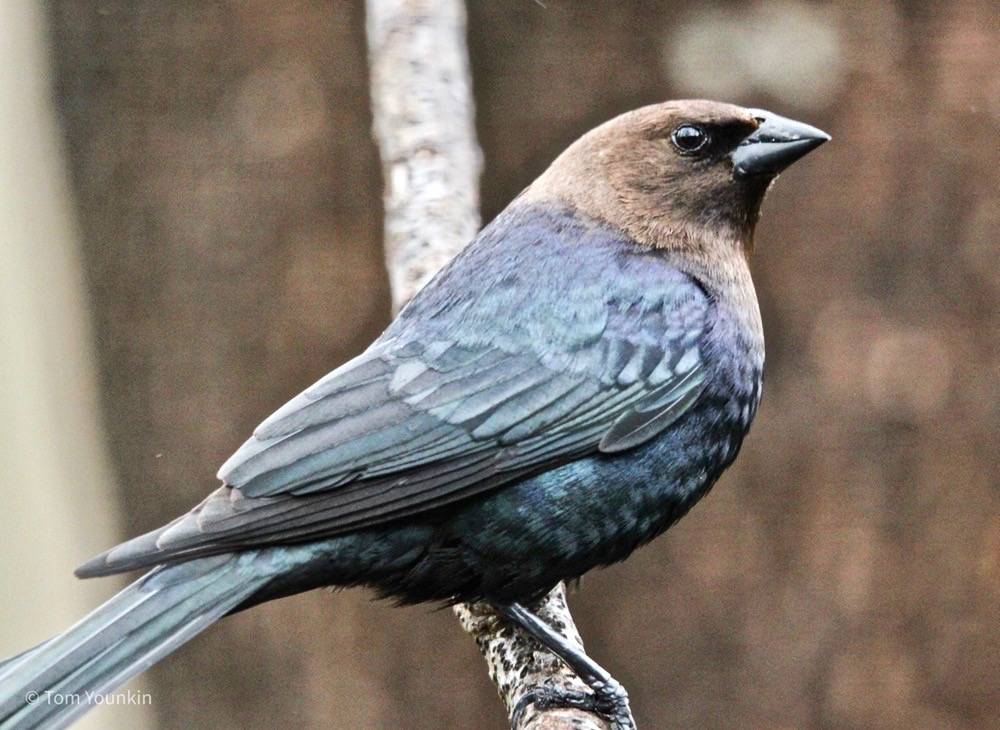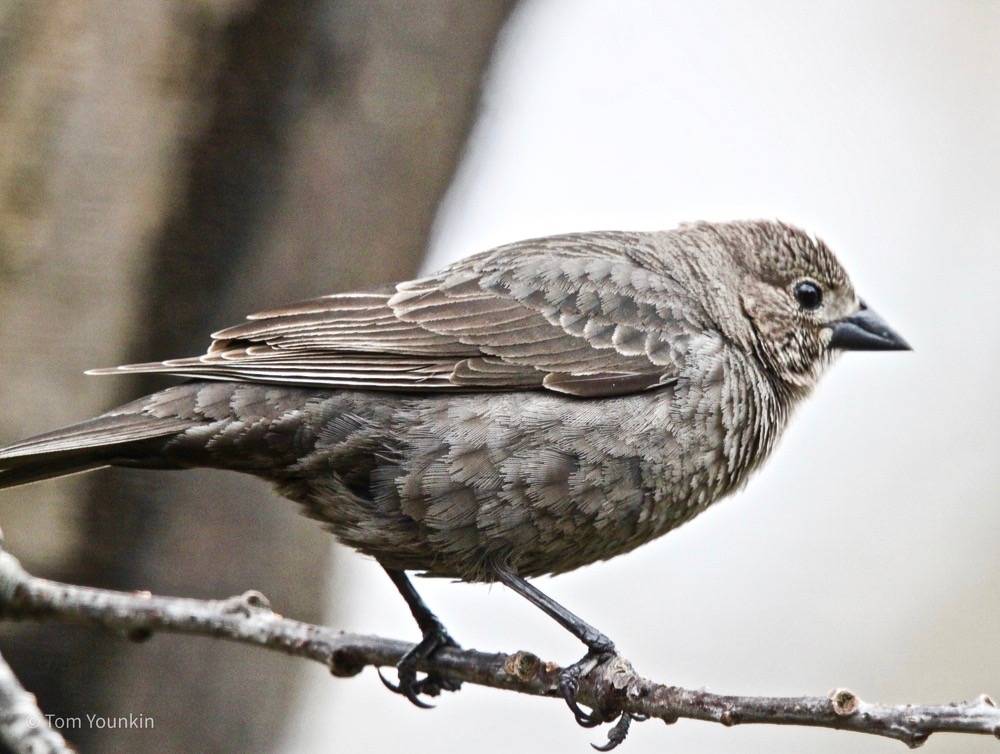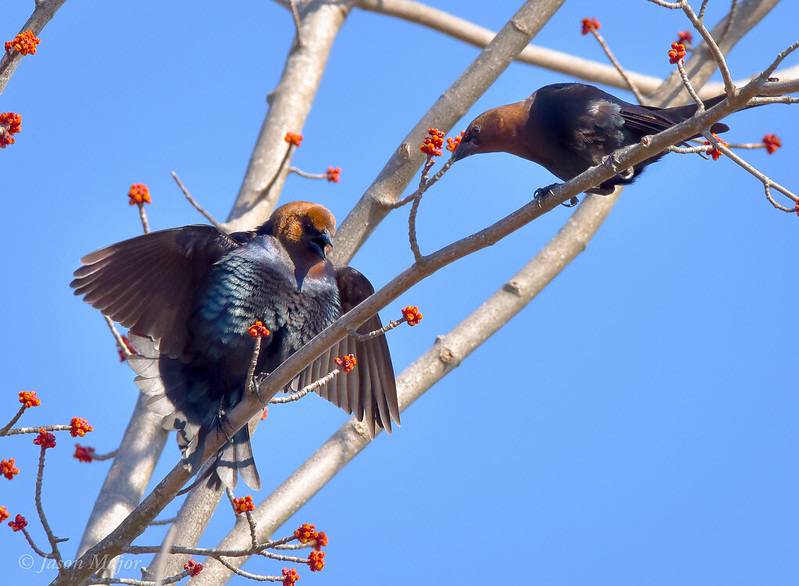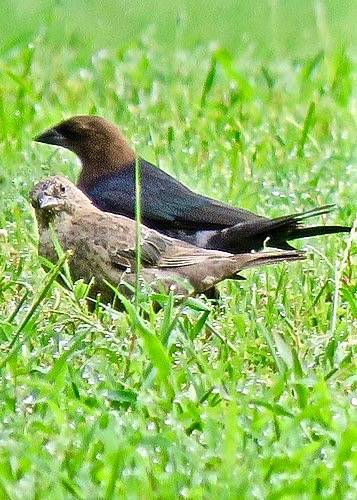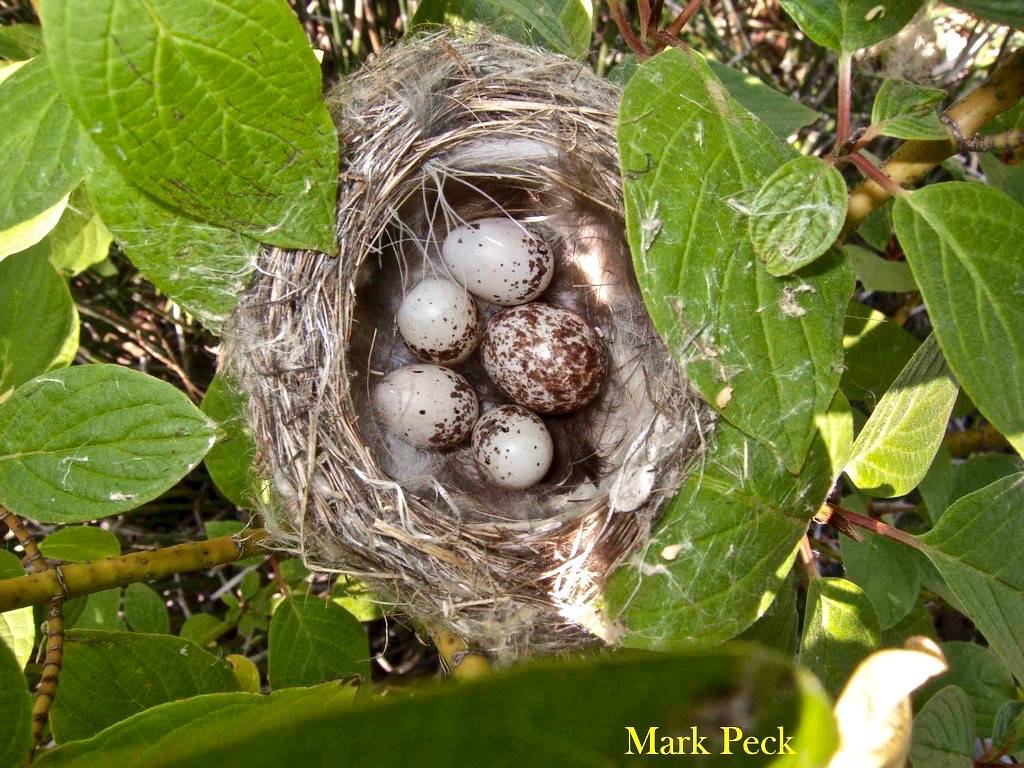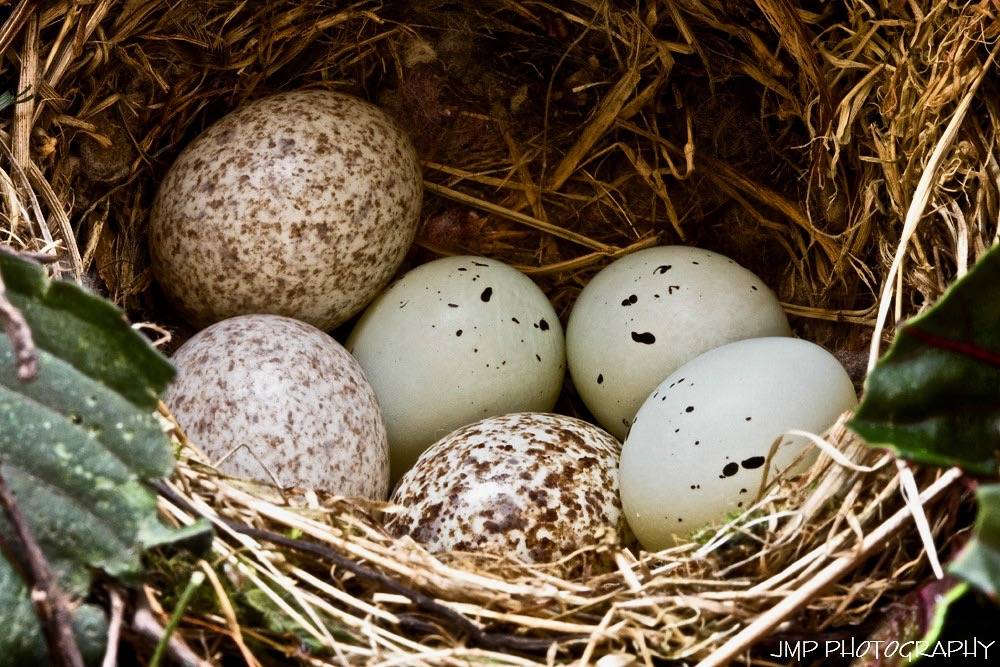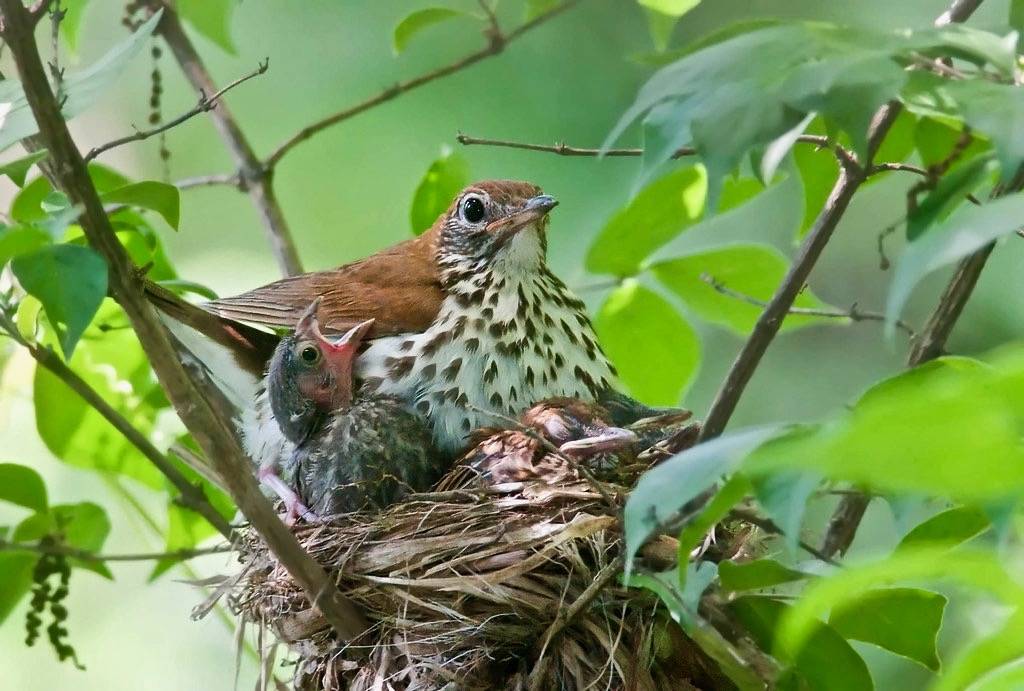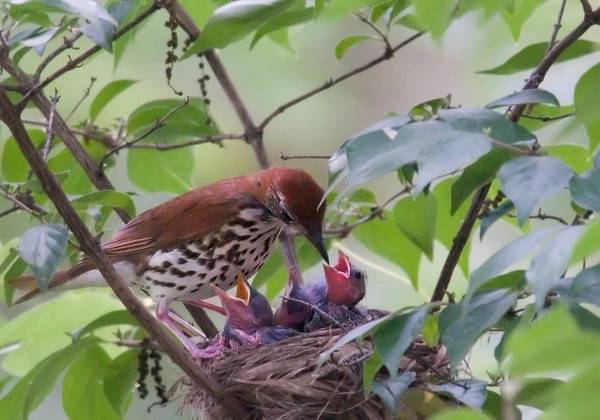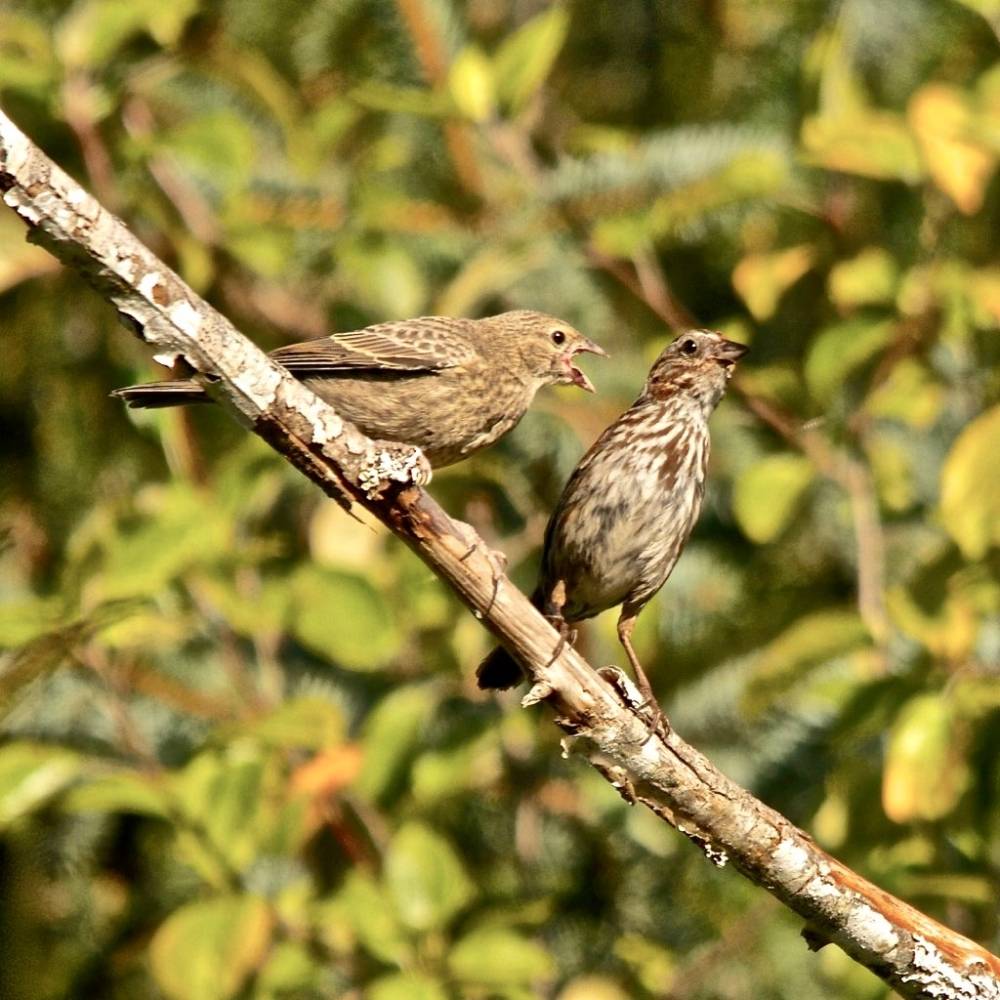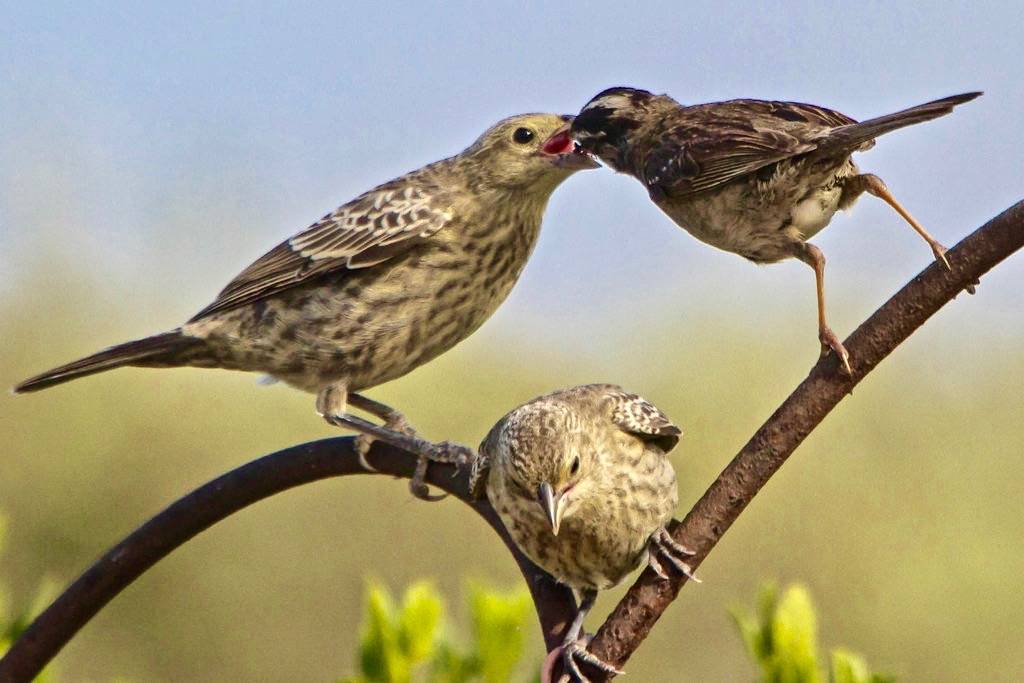Brown-headed Cowbird
Lawns around the parking lot, and Audubon Field are likely places to see Brown-headed Cowbirds during spring migration at Salter Grove.
It is slightly larger than a House Sparrow and was probably called a cowbird because early settlers saw them following bisons to eat insects flushed by these large mammals as they foraged in prairie vegetation. With the demise of the bison, cowbirds now mostly frequent man-made habitats like fields and lawns to feed, but will visit the edge of woodland where they can scout for the active nests of other birds.
Cowbirds are known to deposit their eggs in the nests of over 220 bird species! However, any particular female cowbird would usually specialize on only a few host species. As nest parasites, cowbirds outsource the usual parental duties of nest-building, brooding eggs and raising young.
The parasitized host birds often end up raising no young of their own. Cowbird hatchlings tend to hatch earlier, are larger, and have a bright red mouth. All of these characteristics combine to monopolize the attention of their foster parents. It is quite a sight to see a cowbird fledgling being fed by an anxious foster parent half its size.
On the other hand, cowbird eggs deposited in the nests of the American Goldfinch, House Finch and the Cedar Waxwing will hatch, but will not survive beyond the hatchling stage. Both finch species feed regurgitated seeds to nestlings, whereas waxwings feed primarily fruits to their young. Cowbird hatchlings may be well fed by their foster parents but they will nonetheless starve to death because they require a diet of animal protein rather than plant matter to develop.
For more information:
https://www.allaboutbirds.org/guide/Brown-headed_Cowbird
https://www.audubon.org/field-guide/bird/brown-headed-cowbird
http://www.sialis.org/cowbirds.htm
https://en.wikipedia.org/wiki/Brown-headed_cowbird
http://www.biokids.umich.edu/critters/Molothrus_ater/
https://web.stanford.edu/group/stanfordbirds/text/uessays/uBrood_Parasitism.html

